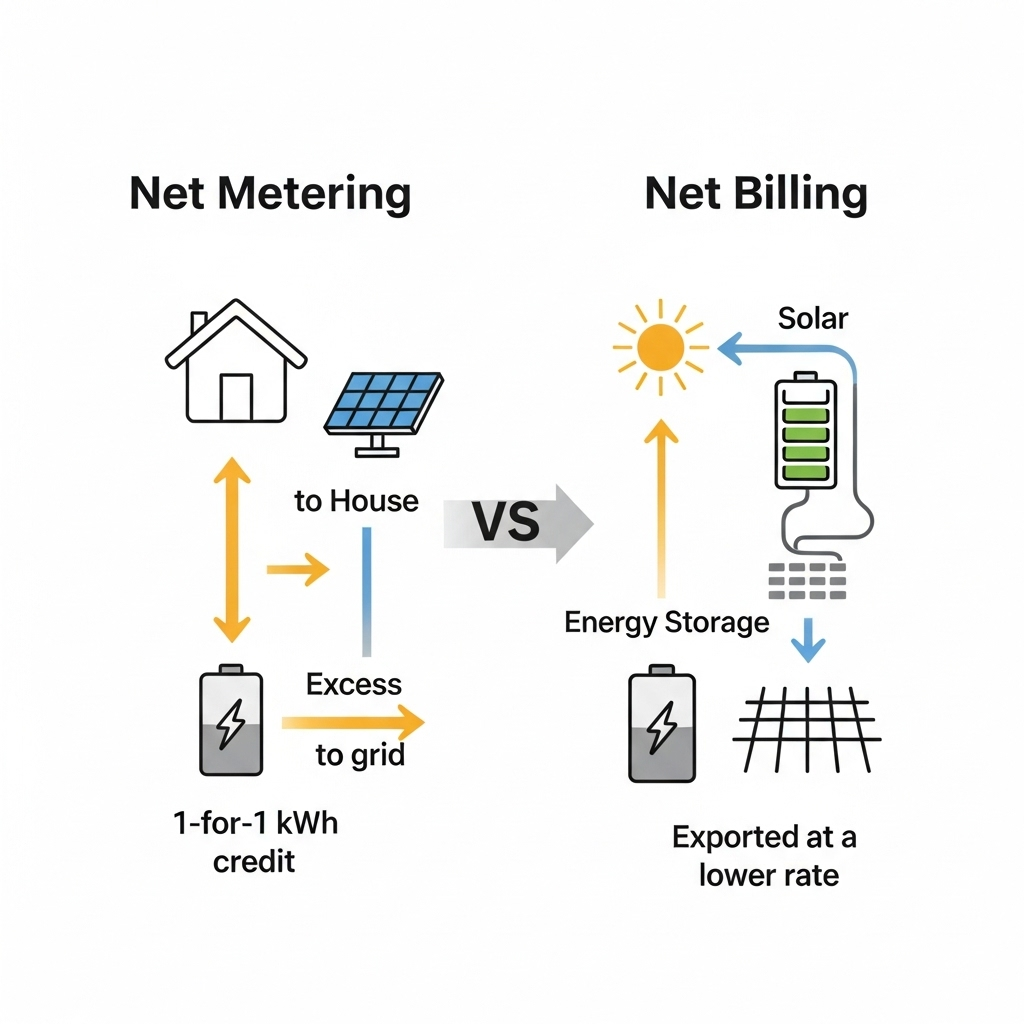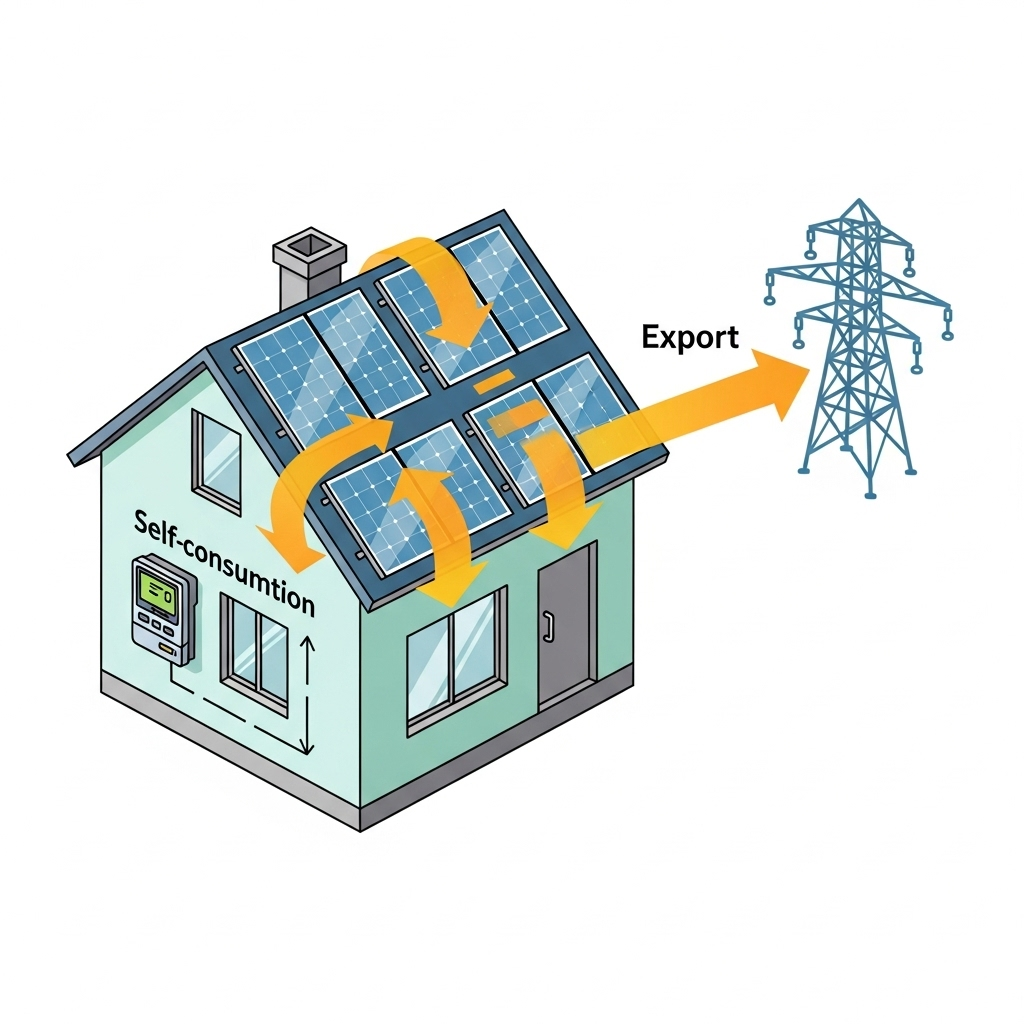Installing a solar power system is a major step toward energy independence. But the process doesn't end once the panels are on your roof. To get financial credit for the excess energy you generate, you must navigate the world of grid interconnection, billing schemes, and export credit compliance. This process ensures your system operates safely with the grid and that you are compensated correctly. Understanding these steps is key to maximizing the return on your solar investment.
The First Step: Grid Interconnection Explained
Before your system can export power, it must be officially connected to the utility grid. This is known as interconnection. It's a formal process that involves both technical and administrative checks to ensure your system is safe and compatible with the public electrical infrastructure.
The Application and Approval Process
The journey to interconnection begins with an application to your local utility company. This package typically includes detailed diagrams of your system's design, specifications for the equipment you'll use (like inverters and panels), and proof of insurance. The utility reviews this information to confirm your system meets their technical standards. In some cases, for larger systems, they may conduct a grid impact study to assess how your system will affect local grid stability. Working with an experienced solar installer is highly beneficial, as they are familiar with local codes and utility-specific requirements, streamlining the approval process.
Technical Compliance and Safety Standards
Safety is the top priority during interconnection. Your system's components, especially the inverter, must be certified to meet stringent safety standards. The inverter acts as the brain of your system and must be able to disconnect from the grid instantly during a power outage. This feature, known as 'anti-islanding', protects utility workers who may be repairing power lines. Compliance with these standards is non-negotiable and ensures your system is a responsible and safe participant in the larger energy network.
Understanding Your Compensation: Net Metering vs. Net Billing
Once you have Permission to Operate (PTO) from your utility, your system can start exporting power. How you are compensated for this power depends on your region's export compensation rules, which generally fall into two categories: net metering or net billing.
Net Metering: The Traditional Model
Net metering has been a foundational policy for residential solar. It's a simple and attractive billing mechanism. For every kilowatt-hour (kWh) of electricity you export to the grid, you receive a credit for one kWh to use later. Think of it as your utility meter spinning backward when you produce more power than you consume. A report from the International Energy Agency, the Technology Roadmap - Solar Photovoltaic Energy 2010, highlights that this model is easy to understand and administer, which helped kickstart local solar markets globally. You typically pay only for the 'net' amount of energy you used from the grid over a billing period.
The Shift to Net Billing
Many regions are now transitioning from net metering to net billing (also known as 'buy-all, sell-all' or an avoided-cost tariff). Under this model, the electricity you export to the grid is credited at a rate different from the retail rate you pay for electricity. This export rate is often based on the utility's 'avoided cost'—the wholesale price they would have paid for that energy from another source. Utilities advocate for this change, arguing that retail rates include costs for grid transmission, distribution, and maintenance, which they believe should be paid by all grid users.
Comparing the Financial Impact
The difference between these two models directly impacts your electricity bill and the payback period of your solar system. Net billing typically results in lower compensation for your exported energy compared to the 1:1 credits of net metering.
| Billing Aspect | Net Metering | Net Billing |
|---|---|---|
| Home Consumption | 500 kWh | 500 kWh |
| Solar Production | 800 kWh | 800 kWh |
| Energy Exported | 300 kWh | 300 kWh |
| Retail Electricity Rate | $0.25/kWh | $0.25/kWh |
| Export Credit Rate | $0.25/kWh (1:1 credit) | $0.10/kWh (Wholesale rate) |
| Monthly Bill Calculation | (500 kWh Used - 300 kWh Exported) * $0.25 = $50 | (500 kWh * $0.25) - (300 kWh * $0.10) = $125 - $30 = $95 |
*This table presents a simplified, hypothetical scenario for illustrative purposes. Actual rates and savings will vary.
The Role of Energy Storage in a New Billing Era
The move toward net billing makes one thing clear: the energy you produce is most valuable when you use it yourself. This is where home battery storage becomes a crucial component for maximizing your solar investment.
Maximizing Self-Consumption
Instead of exporting your valuable solar energy to the grid for a low credit, a battery storage system allows you to save it. You can store the excess power generated during the sunny afternoon and use it to power your home in the evening. This strategy, known as self-consumption, directly reduces the amount of expensive electricity you need to buy from the utility, especially during peak-rate hours.
Boosting System ROI with Storage
In a net billing environment, a home battery transforms your system's economics. It turns low-value exported energy into high-value, self-consumed energy that offsets high retail electricity rates. To truly grasp the financial benefits, you must evaluate key battery metrics. Understanding factors like depth of discharge, cycle life, and round-trip efficiency is critical. A detailed analysis of these figures reveals the true value of adding storage, as explained in this ultimate reference on solar storage performance. By storing and using your own power, you gain more control over your energy costs and accelerate your system's payback period.
Navigating Ongoing Billing and Compliance
Your relationship with the utility doesn't end after interconnection. You'll need to monitor your bills and stay aware of evolving regulations to ensure you are always in compliance and receiving the correct credits.
Reading Your New Utility Bill
Your first few bills after going solar can be confusing. Look for new line items showing the energy your system produced, the amount you exported to the grid, and the credits you received. Carefully compare this to data from your solar monitoring app to ensure accuracy. If something seems incorrect, don't hesitate to contact your utility's solar department for clarification. Correctly tracking your export credits is fundamental to verifying your system's financial performance.
Staying Compliant with Evolving Rules
Export compensation rules are not static. Policymakers and regulators frequently update them. For instance, as detailed in an IEA report, Unlocking the Economic Potential of Rooftop Solar PV in India, some markets have introduced different rules based on system size, such as requiring gross metering for systems above a 10 kW capacity. Staying informed about potential changes in your area helps you anticipate shifts in your solar savings and make informed decisions about future system upgrades, like adding more battery capacity.
Additionally, some policies aim to support local manufacturing. The IEA's Energy Technology Perspectives 2024 notes that countries like Brazil and the United States have implemented local content requirements, linking financial incentives to the use of domestically produced components. While not universal, being aware of such rules is part of comprehensive compliance.
Your Path to Full Energy Control
Successfully navigating the path from interconnection to billing is the final piece of the puzzle in your solar project. It ensures your system is not only a source of clean energy but also a sound financial asset. By understanding the interconnection process, knowing the difference between net metering and net billing, and strategically using battery storage, you take full control of your energy production and consumption. This knowledge empowers you to adapt to changing regulations and secure your energy independence for years to come.
Disclaimer: The information provided in this article is for educational purposes only and does not constitute financial or legal advice. Export compensation rules and utility policies vary greatly by location. Please consult with a qualified solar professional and your local utility for specific guidance.
Frequently Asked Questions
What happens if I produce more electricity than I use in a month?
This depends on your utility's policy. Under net metering, you typically receive an energy credit that rolls over to the next month's bill. Under net billing, you usually receive a monetary credit on your bill at a specific export rate, which may be lower than the retail rate.
How long does the interconnection process take?
The timeline varies significantly by location and utility. It can range from a few weeks to several months. The process involves submitting an application, a technical review by the utility, and a final inspection before you are granted Permission to Operate (PTO).
Do I need a special meter for my solar panel system?
Yes, your utility will usually install a bidirectional meter or a smart meter. This meter is capable of measuring both the electricity you draw from the grid and the excess electricity you send back to it, which is necessary for accurate billing and crediting.
Can I go off-grid completely to avoid these rules?
Yes, an off-grid solar solution with sufficient battery storage can make you fully independent of the utility. This eliminates the need for interconnection and compliance with export rules. However, it typically requires a larger initial investment in batteries and careful energy management to ensure you have power 24/7.





Leave a comment
All comments are moderated before being published.
This site is protected by hCaptcha and the hCaptcha Privacy Policy and Terms of Service apply.